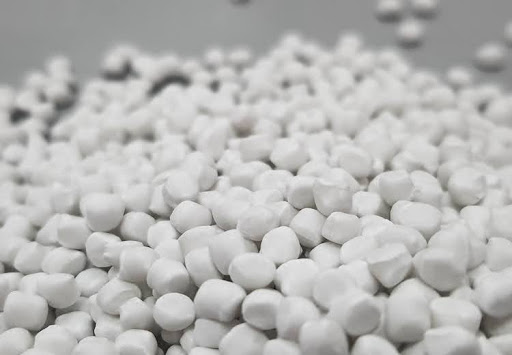
Calcium Filler Master Batches
Filler Masterbatches are concentrates of Calcium Carbonate (CaCO3) or Talc in a polymer base. Filler masterbatch is a concentrated mixture of additives and carrier resins used to improve the properties of plastics.
The offered range is widely used in the plastic industry for manufacturing various plastic products. Although plastics have many excellent properties, they have limitations when compared to metals, particularly in high-performance applications. A single type of plastic is often insufficient to meet the performance requirements for such uses.
Filler masterbatch is created by blending additives such as calcium carbonate, talc, or barium sulfate with carrier resins like polyethylene. These additives are uniformly dispersed within the polymer matrix, enhancing the plastic’s properties, including tensile strength, thermal resistance, and dimensional stability.
Filler masterbatch helps lower production costs and reduce the need for raw materials. Additionally, it enhances processing efficiency and improves the physical properties of the final products.
The purpose to modify plastics
- Improves the overall properties of plastics.
- Enhances the mechanical properties of plastics, such as strength and low-temperature toughness.
- Improves heat resistance. Most plastics have low thermal deformation temperatures, making them unsuitable for parts that operate at high temperatures.
- Enhances processing performance. For instance, PPO (Polyphenylene Oxide) has poor molding properties, but adding PS (Polystyrene) significantly improves its processing fluidity.
- Reduces water absorption and improves the dimensional stability of products. For example, polyamide absorbs more water, causing dimensional changes in the product.
- Improves fire resistance. Most plastics are flammable, which poses a safety risk when used in electrical and electronic equipment.
- Reduces material costs. Engineering plastics tend to be expensive, so blending them with general-purpose plastics can lower material costs while improving molding properties.
- Improves the functionality of plastic. For applications requiring conductivity, plastics can be blended with conductive polymers to achieve anti-static properties, electromagnetic shielding, and other specialized functions, making them suitable for use in electronics, home appliances, communications, and military applications.
By using filler masterbatch for blending and modification, the overall performance of plastics can be improved at relatively low investment costs. This expansion in plastic varieties increases their range of applications, promoting the development of high-performance, functional, and specialized plastic materials. Additionally, it drives the growth of the plastic industry and the broader high-polymer materials sector.
